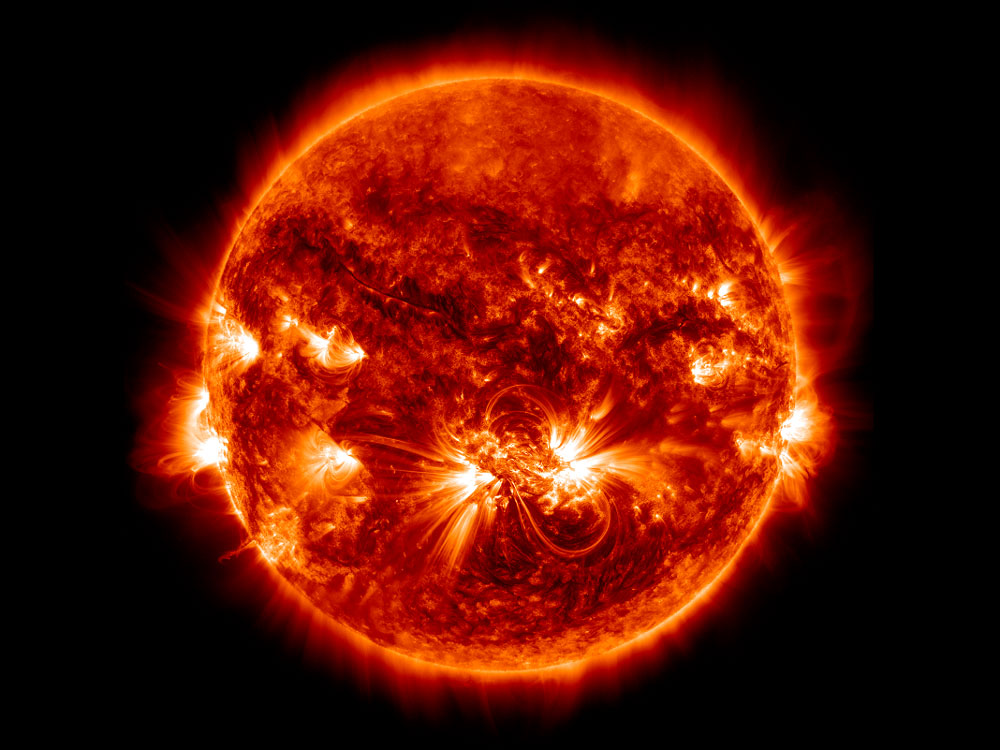

Radio telescopes are particularly valuable for studying the corona because radio waves will propagate only when their frequency exceeds the so-called plasma frequency of the local medium.

Because the temperature is high, the density drops slowly, by a factor of e (2.718) every 50,000 kilometres. The density at the base of the corona is about 4 × 10 8 atoms per cubic centimetre, 10 13 times more tenuous than the atmosphere of Earth at its base. The ultraviolet portion of the spectrum is filled with strong spectral lines of the highly charged ions. Hydrogen and helium are entirely ionized, and the other atoms are highly ionized. The brightest regions are the active regions surrounding sunspots. There are regions of little or no corona called coronal holes. Loops of bright material connect distant magnetic fields.
Sun corona full#
While the corona is one million times fainter than the photosphere in visible light (about the same as the full Moon at its base and much fainter at greater heights), its high temperature makes it a powerful source of extreme ultraviolet and X-ray emission.
Sun corona how to#
COVID-19 Portal While this global health crisis continues to evolve, it can be useful to look to past pandemics to better understand how to respond today.Student Portal Britannica is the ultimate student resource for key school subjects like history, government, literature, and more.From tech to household and wellness products. Britannica Explains In these videos, Britannica explains a variety of topics and answers frequently asked questions.This Time in History In these videos, find out what happened this month (or any month!) in history.#WTFact Videos In #WTFact Britannica shares some of the most bizarre facts we can find.Demystified Videos In Demystified, Britannica has all the answers to your burning questions.Britannica Classics Check out these retro videos from Encyclopedia Britannica’s archives.


 0 kommentar(er)
0 kommentar(er)
